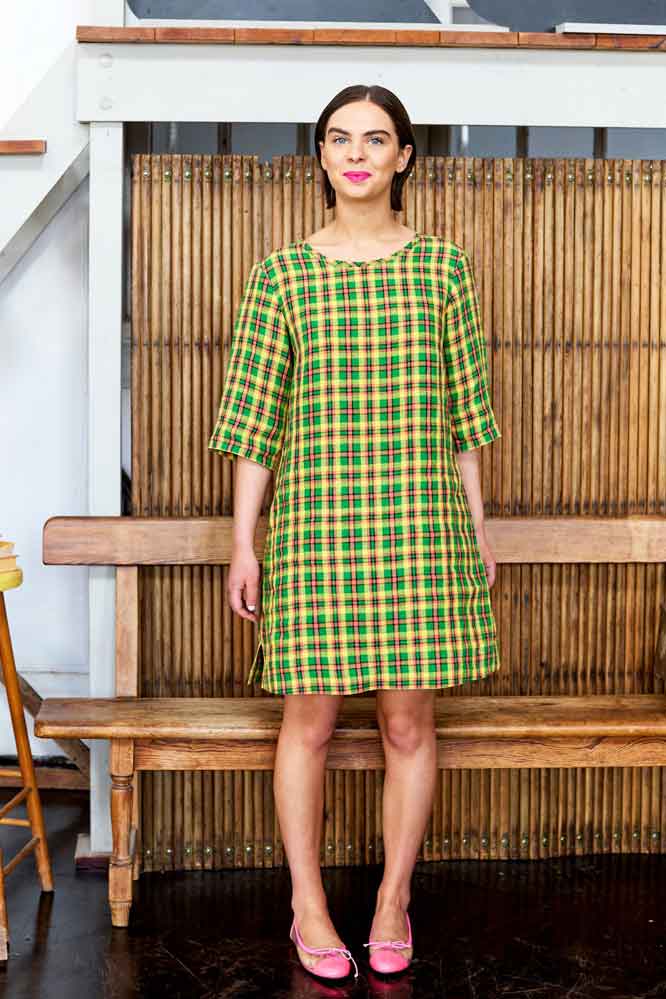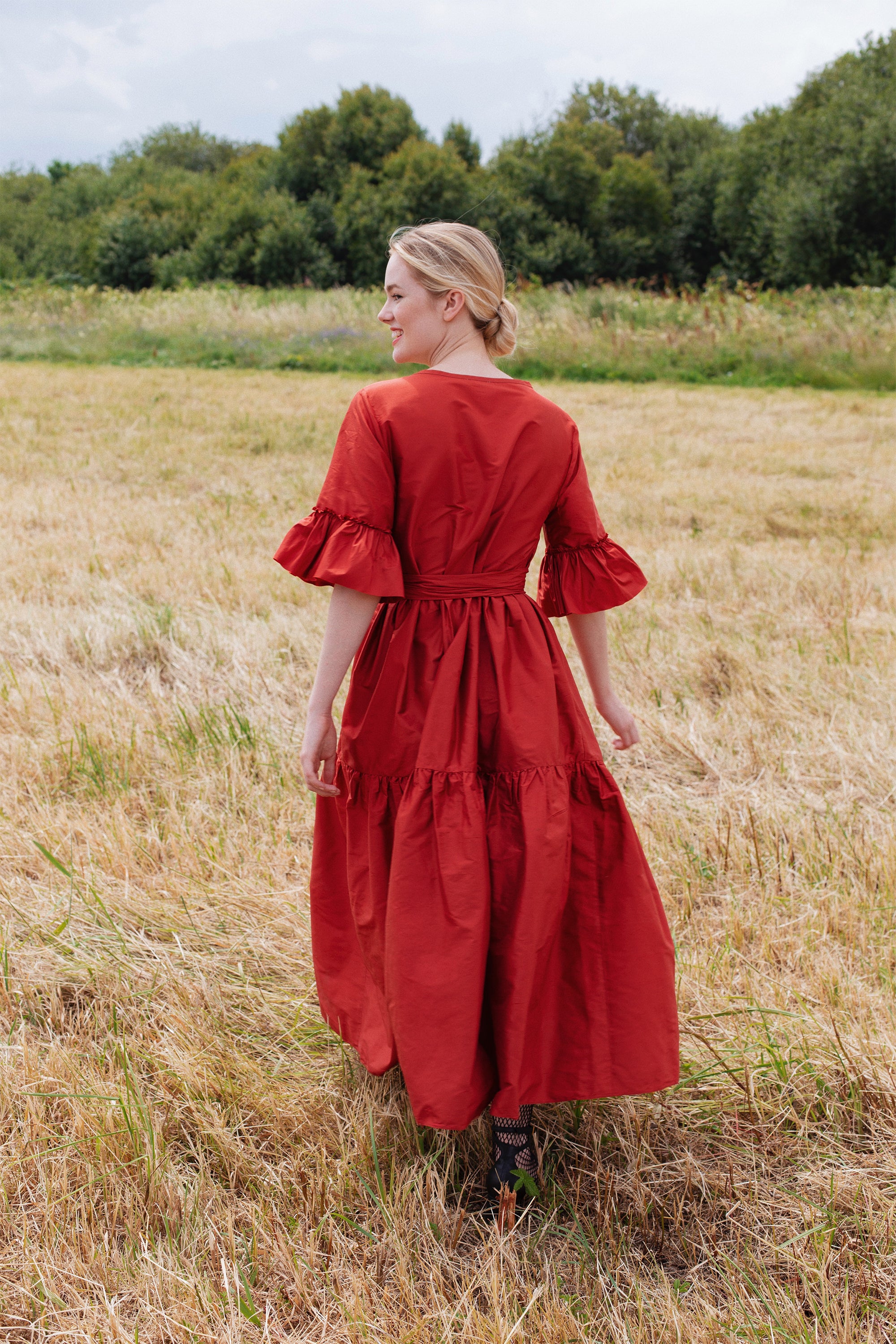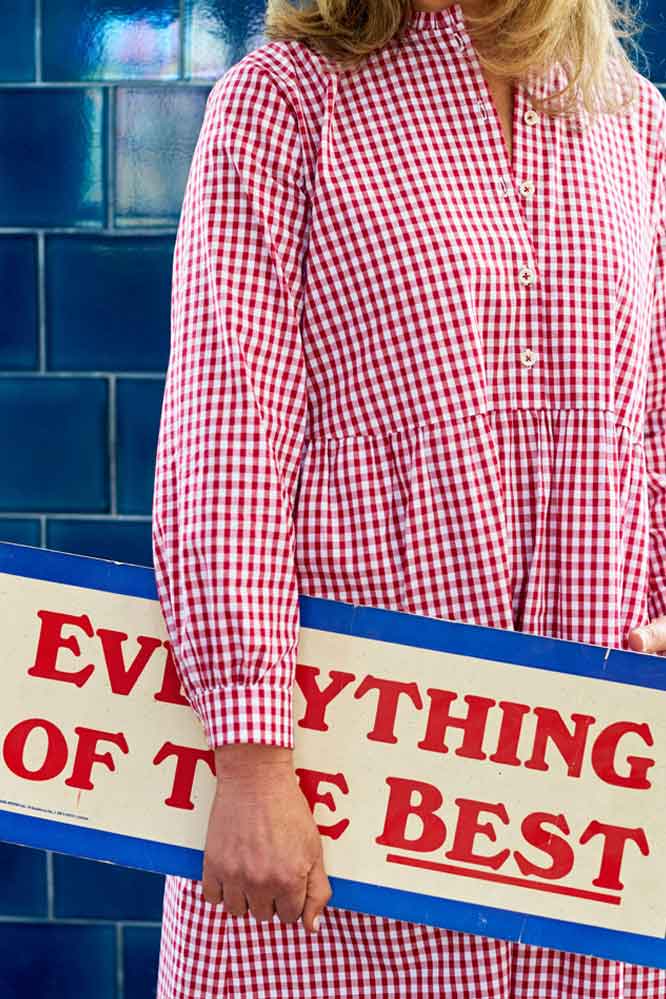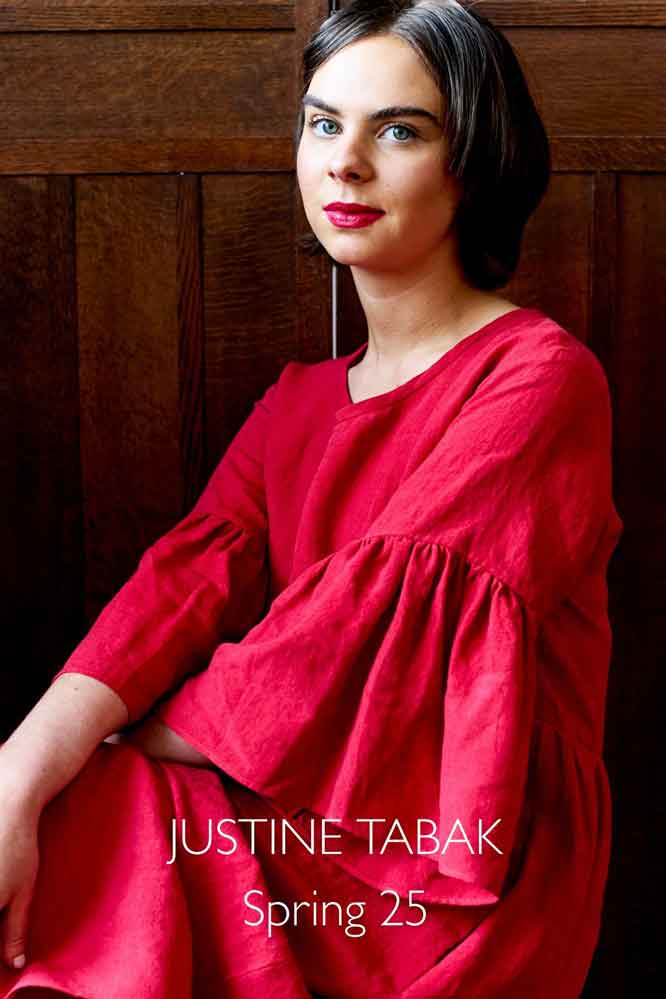Tartan British Wool for a New Brighton Crop Trouser
Whilst I'm known for dresses, sometimes I also like to pull on a comfy pair of trousers and a slouchy jumper. This season we took the plunge and decided to develop the very first JT trouser - the Brighton Crop. Available in a soft chunky cord in navy and rust, and in soft British tartan wool, the shape is designed to pull on as easily as a pyjama whilst looking modern and flattering.
The tartan wool version featured today is made out of a beautiful cloth milled right here in Yorkshire. Abraham Moon & Sons has been making wools since 1837 from the community in Guiseley, between Leeds and the Yorkshire Dales. Originally pieces were woven within homes like many cottage industries at the time, then were collected and paid for by the company who went on to wash, hang dry in local fields and finally sell at Leeds market.
In 1869 Abraham Moon bought the mill where the company is still located today, using the same original pure water springs for scouring (washing) as they did back then. Although the original mill burnt down in 1902, the facility was rebuilt on the same grounds because of the natural soft water supply available, and over time the mill became fully vertical - meaning all manufacturing processes took place on site.




Over the years Moons persevered in a changing economy; where many brands were opting for man-made fibres and looking to foreign suppliers to cut costs, Moons stood the test of time because of their focus on quality. By keeping the mill vertical they were able to control the consistency of their product, producing a fabric that, whilst not cheap, is symbiotic with luxury.
The process of making beautiful wool, such as my red tartan wool used in the Brighton crop, can be followed through 8 separate processes ...

High quality raw wool is bought from proven sources predominantly from New Zealand and South Africa.

Raw wool is taken to the internal dye house where it's dyed to one of their 500 shades. The recipes are kept top secret!

Up to 7 different colours are blended within each yarn to create the finished colour. This variation creates the rich depth of shade, for example within the pure red of my check there could be up to 7 different dyed shades.

Carding is the process of running the blended wool through a series of combed rollers that first tease the fibres one way then the other. This removes impurities and helps to produce a smooth and soft fabric.

Fibres are wound onto a spool and spun into a fine but strong yarn.

Warping takes place, with up to 2000 threads wound over a drum to make a warp (lengthwise threads) for weaving a width of fabric. This is a complicated process and needs to be accurate to produce precise patterns.

Fabrics are woven using automatic looms that take the weft across the warp threads. Every inch of fabric is inspected three times to ensure quality and accuracy.

Fabric is scoured using pure spring water from below the mill, is milled and then dried. Fabric is finished by careful pressing and steaming to ensure shrinkage is removed.
Throughout the process of making wool at Moons, sustainability is considered at every stage. For example, all farms they buy raw wool from ensure their sheep live in ethical conditions with plenty of grassland to roam and feed upon. Only eco-friendly detergents are used in the washing process, and being a 100% natural and renewable fibre the fabric doesn't affect the food chain at the end of its lifecycle.
If you'd like to learn any more about Abraham Moons please do visit their website at:
https://www.moons.co.uk/
I hope you love my new Brighton Crop trouser as much as we loved creating it for you!
Justine x











Leave a comment
This site is protected by hCaptcha and the hCaptcha Privacy Policy and Terms of Service apply.